-
solutinos
-
Hire
Frontend Developer
Backend Developer
-
NodeJS Developer
-
Java Developer
-
Django Developer
-
Spring Boot Developer
-
Python Developer
-
Golang Developer
-
Ruby on Rails Developer
-
Laravel Developer
-
.NET Developer
Technology
-
Flutter Developer
-
React Native Developer
-
Xamarin Developer
-
Kotlin Developer
-
Cross-Platform Developer
-
Swift Developer
-
MongoDB Developer
-
C Developer
-
Smart Contract Developers
Cloud
-
-
Services
Mobile Development
Web Development
- Work
-
Multi Services App
-
Food Delivery App
-
Grocery Delivery App
-
Taxi Cab Booking App
-
Multi Services App
-
OTT Platform APP
-
Social Media APP
-
Freelance Service App
-
Car Rental App
-
Medicine Delivery App
-
Liquor Delivery App
-
Sports Betting App
-
Online Coupon App
-
eLearning App
-
Logistics & Transportation App
-
Courier Delivery App
-
On-Demand Real Estate App
-
E-Wallet APP
-
Online Dating App
-
Handyman Services App
-
-
Process
-
Company
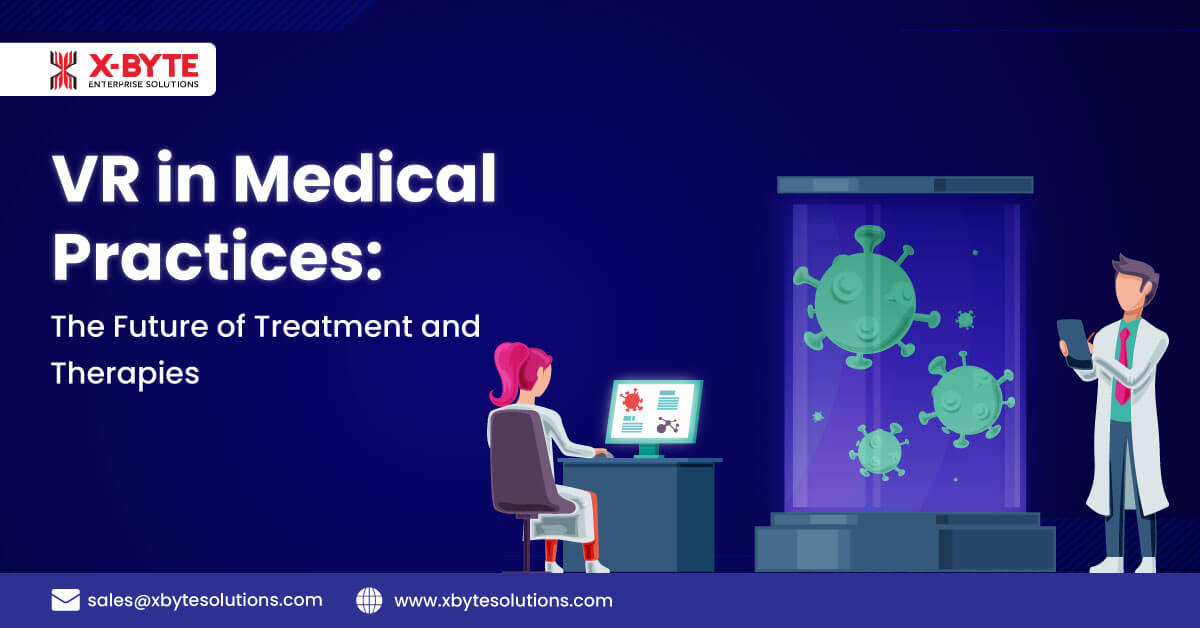
Quick Summary : In the medical healthcare field, technologies like Virtual reality, augmented reality, and mixed reality are creating new avenues of treatment, therapies, and care. VR in healthcare is assisting doctors and medical practitioners in treating chronic diseases like diabetes, to provide painless treatment options for invasive surgeries. Futuristic VR tech like VR haptics, BCI VR therapies, AI-powered VR, etc. will go a long to uncover the untapped potential in the healthcare ecosystem.
Healthcare today stands as one of the top five use cases of virtual reality. Virtual reality-powered simulated experiences are easing the lives of doctors, medical students, and patients. From diagnosis to treatment, VR technology has a 360-degree application in healthcare. Many futuristic VR applications are now in pipelines and many are awaiting patent approvals. Even VR headsets are getting more sophisticated day by day. Hyper-realistic CGIs from this immersive technology are impacting the whole healthcare spectrum. Healthcare VR’s future applications are immense and only limited by our imagination.
This article discusses the future of VR in healthcare and details how emerging VR technologies, wearable VR, and VR apps will change the paradigm of the healthcare sector in the future.
VR in Medical Practices: The Future of Treatment and Therapies
The use of virtual reality in medicine dates back to the late 1960s. Robert Mann developed a platform where orthopedics can practice. Since then, from treating Parkinson’s disease to increasing the efficacy of neurorehabilitation, virtual reality systems have never looked back. VR’s role in healthcare has been transformative, particularly in the fields of clinical training, pre-operative practice, and pain management.
Virtual reality is a way to immerse patients in alternative worlds, different landscapes, environments, different planets, or places that they haven’t even imagined before. Such engagement improves the quality of care and patient experiences.
Below are some of the top futuristic use cases of the VR in healthcare:
| Diagnostics | Practising Surgeries | Painless Treatment | Phobia Therapies | Stroke Rehabilitation |
| Eating Disorders Treatment | Addiction Treatment | Chronic pain management | Dentistry | Autism Therapy |
Diagnostics
Neuroscience is a field that is now using VR for diagnostics purposes. For example, an article published in the Military Medicine Journal mentions a device for neuro-optical diagnostics (diagnosing vision and neurological disorders) using VR headsets. NeuroDotVR, developed by NeuroFieldzmay be the first technology that combines portable brain monitoring with a mobile VR headset. VR environments are safer and controlled and therefore, conducive for studying brain and behavior interactions.
Practicing Surgeries
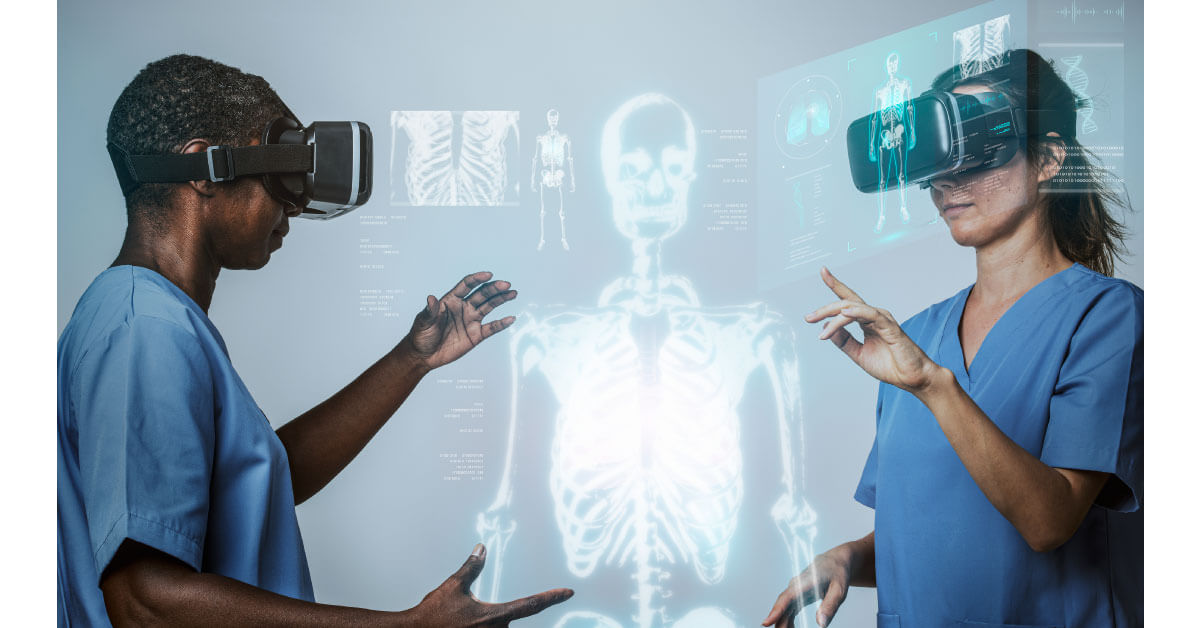
VR is helping surgeons practice complex surgeries using 3D VR models of patient anatomy. For complex procedures, surgeons can simulate the actual operation theatre procedure using VR.
See the below still from a VR simulation application:
Even students of medical science can use VR to explore the human body’s anatomical structures. This reduces the need for actual bodies (cadavers) in medical hospitals and colleges. Medical faculties can simulate surgical procedures to explain them in a better way to students. Also, with VR, students can explore the body’s interiors or otherwise inaccessible parts with clarity in a 360-degree reconstruction.
Painless Treatments
VR is getting vogue in painless treatments too. Nurses who need to draw blood from children can use VR to keep children busy while they complete the process. For example, children can explore virtual zoos or amusement parks for distraction during blood draws. Children using VR report lower levels of pain and anxiety compared to those receiving standard care. Relaxation-VR is a VR prototype designed to reduce anxiety, stress, and pain in hospitalized children (Ages 4-16) by providing distraction and relaxation (research published by the National Library of Medicine). The use of VR in hospitals is well-documented. For example, Mount Sinai Hospital in Israel uses virtual reality to counter chronic pain.
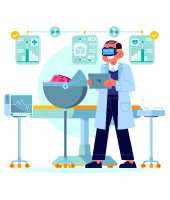
Develop healthcare VR prototypes or MVPs with our AR/VR app development solutions.
Contact us! Contact us!Phobia Treatment
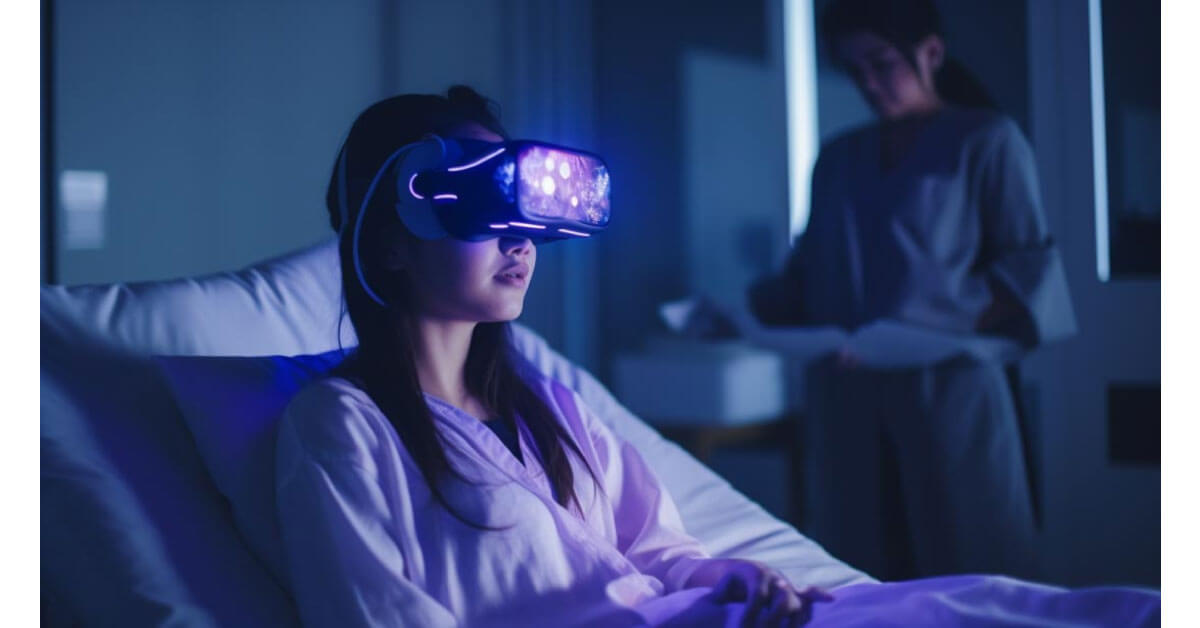
Mental health practitioners can create stimuli to assess the patients using VR devices. This provides a safer way to create challenging situations for patients without actual risks. For example, a patient with height-related fear (Acrophobia) can treated using a VR environment where there is no actual fear of falling.
People with claustrophobia (fear of closed space) experience dizziness, fear, shortness of breath, and severe nervousness when they are in such spaces. For claustrophobic patient treatment, doctors use VR to create environments like enclosed spaces. VR provides greater control, flexibility, and customization of virtual environments. International Journal of Engineering Trends and Technology published findings of research in January 2024 titled: Application of Virtual Reality in the Treatment of Claustrophobia in Adolescents. Such studies aim to show how VR can help in therapies involving phobic patients. Even patients who require MRI but are claustrophobic can use VR while they have to go inside the MRI machine.
Stroke Patient Rehabilitation
MindMaze is a global pioneer in using virtual reality to treat stroke patients. The Switzerland-based company uses brain imaging and VR headsets to help patients recover after a stroke. The tech also relieves pain for amputees and helps them exercise better. For example, if someone has trouble moving their upper arm, The VR plays a fun game, like racing cars or slicing fruit, as part of their therapy. The system watches how they move to suggest better ways to do their exercises, making recovery more engaging and effective.
Eating Disorders
Virtual Reality (VR) technology is increasingly being used to enhance cognitive-behavioral therapy (CBT) for treating eating disorders (EDs). VR-enhanced CBT is decreasing preoccupation with weight, and reducing binge eating. VR provides ecological simulations of real-life scenarios where problematic eating behaviors occur. Patients can repeatedly face and manage these scenarios. For example, doctors can show patients how their bodies will change once they follow a particular diet regime using VR.
Addiction Treatment
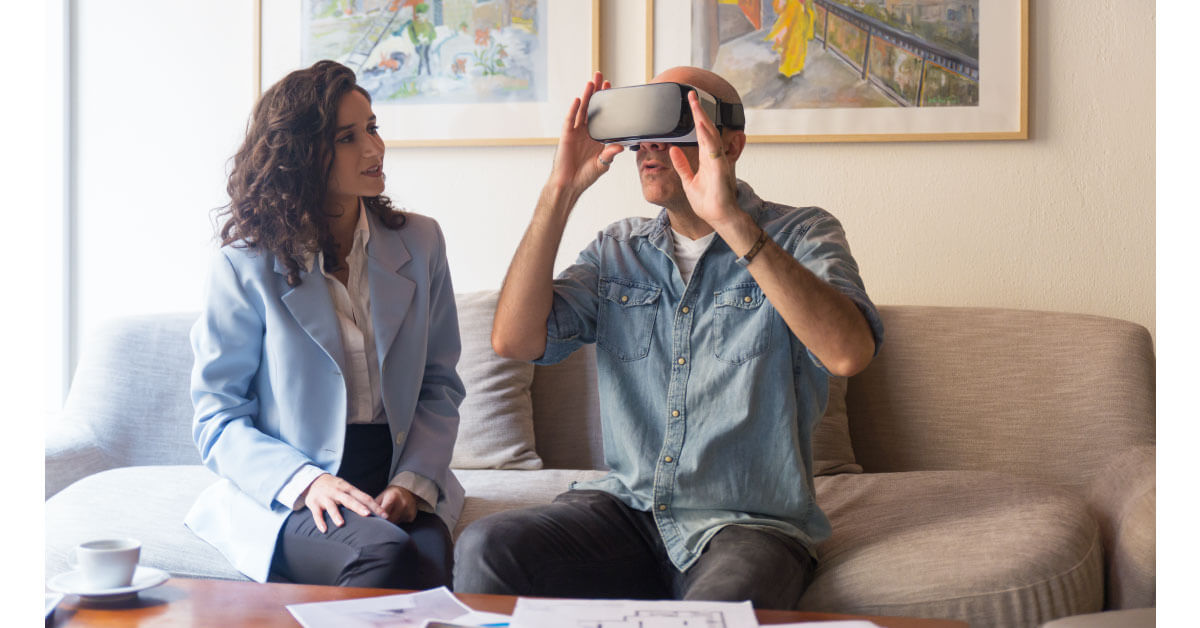
Companies like C2Care have created VR applications that help therapists treat addictions like smoking, drugs, and alcohol. The technology develops optimal virtual contexts that mimic real-life situations associated with the patient's addiction. The designed addiction environments (casinos, bars, etc) evoke intense cravings in patients, the same as they will experience in real life. The VR addiction scenarios will simulate the same cognitive, emotional, and behavioral response from the addict patients and based on that therapists can treat the patients.
Discover the latest advancements in VR for medical practices and stay ahead in the competition!
Chronic Pain Management
Chronic pain impacts and worsens the lives of millions of people globally. Generally, people take OTC medications, and prescription drugs, use TEN stimulation therapies or devices, go for physiotherapy, etc. However, a new treatment using VR systems is gaining popularity for chronic pain treatment. The US FDA authorized an immersive VR system EaseVRx (medical grade) that uses CBT for pain reduction for chronic lower back pain patients above 18 years.
VR for chronic pain aims to calm rather than excite. It creates serene environments like grassy fields, birds chirping, streams flowing, etc. to induce calmness. Mindfulness technique along with guided imagery is impactful in treating chronic pain.
Dentistry
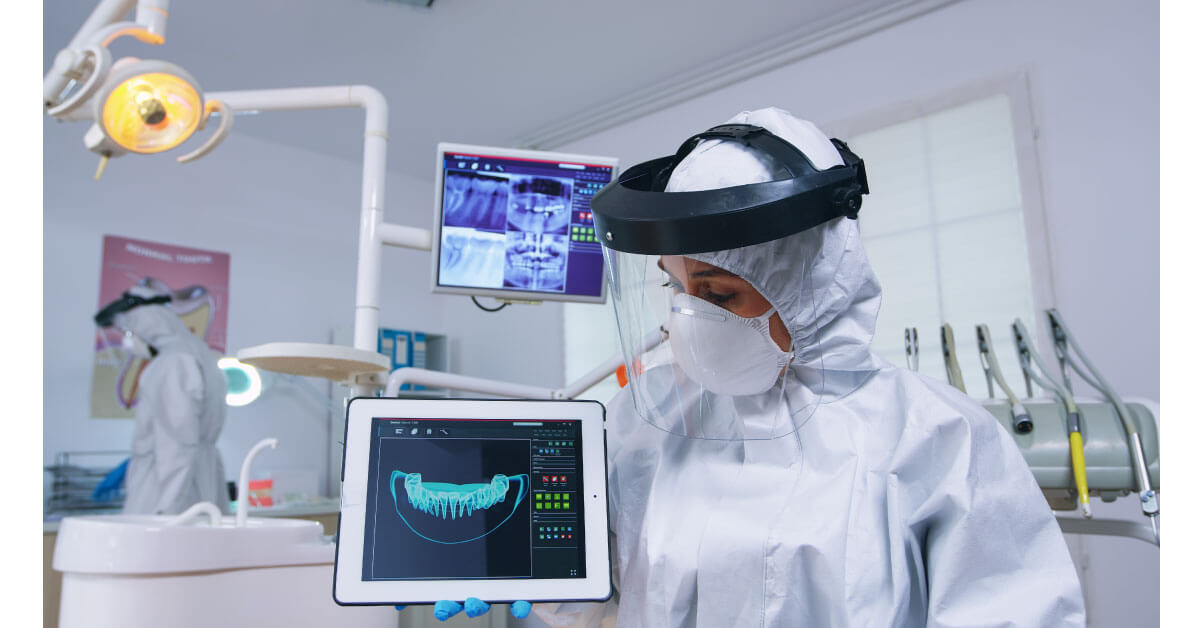
As the costs of virtual reality devices get more affordable, their use in dentistry as a psychological aid is gaining traction. The fear of dentists is real for many. Remember the Mr. Monk Goes to the Dentist episode (season 4 Ep: 15) of the famous Monk Series. Mr. Monk, an exceptional detective is reluctant to go to the dentist due to his irrational fear.
VR headsets and VR solutions like Google Cardboard are effective in changing the perception. The patients can be given multi-sensory experiences or advanced isolation with immersive VR while dentists can conduct procedures like tooth extraction or cavity refills. Research showed an 8-point reduction in anxiety (STAI-YA) by VR use during a dental procedure involving anesthesia. Already virtual reality platforms like Dentaverse are creating venues for dentists to examine and analyze patients in immersive dental lab environments from anywhere in the world.
Autism Therapy
VR has been around for some time now as an effective method to support and treat patients with autism. The core areas where VR can help those with autism issues is in overcoming communication barriers and managing phobias. For example, virtual reality devices use avatars to encourage autistic children to maintain eye contact during public speaking. VR can help therapists to create CBT visualizations and imagery to tackle common phobias in autistic children, such as fear of public transport, or crowded classrooms. A VR headset tech company, Floreo, has developed nearly 200 virtual reality lessons to help children build social skills, reports the NY Times.
VR Applications and Benefits for PTSD: Integrating VR for Mental Health
The various levels of virtual reality (VR) immersion—non-immersive, semi-immersive, and full-immersive—offer unique applications for treating mental disorders and Post-traumatic Stress Disorder (PTSD).
| Non-Immersive VR | Semi-Immersive VR | Full-Immersive VR | |
|---|---|---|---|
| Application | Primarily used for cognitive interventions in PTSD | More engaging experiences than non-immersive VR, Post-traumatic stress reduction | Intense and realistic form of exposure therapy for PTSD |
| Benefits | Accessibility
Easily accessible and user-friendly for initial exposure to therapeutic VR environments. ControlOffers patients a controlled introduction to therapy, minimizing potential overwhelm. FunctionalityWell-suited for cognitive behavioral therapy exercises. |
Gradual Exposure
Helps patients gradually confront fears or stressors by controlling the intensity of exposure. Safety and ControlMaintains a balance between immersion and awareness of the real world Controlled Anxiety ManagementSafe space for patients to explore and interact with their anxieties. |
Deep Immersion
Transports patients fully into scenarios that replicate real-life situations PersonalizationEnvironments and scenarios can be customized to match individual patient needs and therapeutic goals, Engagement and InteractionInteractive and multisensory engagement (visual, auditory, tactile) with cognitive processing Real-Time FeedbackSystems adapt to the patient's biofeedback, promoting mindfulness |
VR Healthcare Future: Emerging Technologies
By 2025, the VR software market size for healthcare alone will reach $5.1 billion and around $38+ billion by 2032 (CAGR of 32%). VR healthcare start-ups who want to establish VR application businesses can collaborate with healthcare professionals and developers of VR software applications.
Emerging VR healthcare technologies discussed below are poised to make innovative changes and betterments in the healthcare ecosystem.
VR Haptics in Healthcare: The feel for real-life simulations
VR Haptics refers to the integration of touch technology ‘the feel’ and ‘the physical sensations’ into virtual reality (VR) systems for more realistic simulations. Haptic feedback technology adds a sense of touch to the visual and auditory elements of VR devices. For example, vibrotactile haptics VR devices have small motors that create vibrations felt by hand.
With VR Haptics, users can feel sensations such as pressure, texture, and resistance, making VR a more immersive tool for medical training and patient treatment. In surgical training, haptic feedback can simulate the feel of different tissues and organs, helping surgeons refine their techniques.
Brain Computer Interfaces (BCI) in VR Therapy
Brain interfaces that interact with VR systems will allow patients to control VR environments with their thoughts alone. These interfaces command VR to act based on neuro signals received from brain activity. Every time we feel something neurons use electrical signals to communicate to organs. BCI computer programs can detect and interpret these signals. So, a person wearing a VR device with BCI sensors can direct a computer program just by thinking about it. In healthcare therapy, this tech can help people with severe motor disabilities to control VR without the need to do it physically. In simple words, brain-computer interfaces revolutionize VR therapy.

Excited to know more about VR in healthcare?
Get in touch with us Today! Get in touch with us Today!AI-powered VR healthcare
You must have heard that the convergence of Artificial Intelligence (AI) and Virtual Reality (VR) will be a game changer in the healthcare field. In February 2024, a team from Cedars-Sinai disclosed the creation of a new AI/VR app Xaia that merges artificial intelligence (AI) with virtual reality (VR) technology. The app helps patients with mental depression using Apple Pro Vision, one of the most sophisticated VR headsets. AI-powered VR healthcare systems enhance the virtual reality experience, making it more interactive, intelligent, and personalized.
For surgical training, AI can create highly detailed and accurate simulations of human anatomy. AI algorithms can adjust VR therapy sessions based on the patient's progress, offering a truly personalized rehabilitation journey.
VR Gaming in Healthcare
VR game aims to improve the quality of life for individuals with chronic diseases by providing interactive and educational VR experiences. VR gives the ability to perform actions like running and jumping in a virtual environment, which can be gratifying for patients with physical limitations like amputees, fractured, etc. VR gaming helps alleviate depression.
Personalized Medicine Approaches
VR can significantly contribute to personalized medicine by providing customized therapeutic and training experiences as per individual patient needs. For instance, VR can create personalized rehabilitation programs, customize exercises for patients with cerebral palsy, or show bespoke exposure therapy sessions unique to each patient.
Telemedicine
VR makes telemedicine consultations more realistic. This is particularly useful for medical treatments like remote rehabilitation services where patients can undergo physical therapy from the comfort of their homes.
How Emerging VR Reality Technologies Will Benefit Patients, Doctors, and Medical Students?
Virtual reality makes healthcare pleasant and more effective. VR has great potential in multiple healthcare streams and its key stakeholders: Patients, doctors, and medical students. The below table highlights the benefits of VR technology for healthcare participants.
| Patients | Doctors | Medical Students |
|
|
|
|---|
Conclusion
With all the amazing capabilities of VR discussed in this article, VR has the potential to completely transform the healthcare field in the future From remote doctor-patient interactions to patient care at home, VR-enabled tech not only enables doctor-patient interactions that are not possible otherwise, but it also improves the quality of care, counseling, and healthcare training. VR is the enabler for personalized, immersive, and safer patient care.
Frequently Asked Questions
-
Can VR enable remote surgery with improved
precision?
VR can enable remote surgery with improved precision by providing surgeons with immersive 3D visualizations. Advanced VR systems can simulate the surgical environment helping surgeons practice and plan complex surgeries with greater accuracy. VR can be integrated with robotic surgery systems. This means that surgeons can guide robots via VR to operate remotely.
-
How are doctors using VR applications for
managing chronic diseases like diabetes?
VR can simulate the impact of diet and exercise on blood sugar levels, helping patients make informed decisions about their daily routines. Doctors are using VR applications to manage chronic diseases like diabetes by providing immersive educational tools and therapy sessions on the effects of lifestyle choices on sugar levels.
-
How can AR enhance VR applications in medicine?
AR enables VR technology to transcend location constraints to deliver remote patient care. The combination is the future of VR tech in healthcare. For example, VR can create detailed 3D models of a patient's spine that has deformities. However, integrated AR can help doctors go one step further. With AR, surgeons can overlay digital images in the real world. This means they can see the patient's spine on top of their actual view, which shows them where to cut and how to fix the spine accurately. This type of augmented reality view helps surgeons make more precise cuts.
